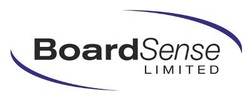Don't dismiss this article as being relevant to nonprofits and charities only - there are 12 topics with a number of probing questions in each relevant to any organisation.
The article is from the Charity Commission for England and Wales and addresses the important question: 'What are the implications of digital for the charity sector?'
I've printed the article off to use with the charities I work with because it addresses the issue of using digital to deliver vision, mission and strategy.
My guess is that there will be at least a handful of questions relevant to your organisation(s).
Enjoy the read!
https://www.gov.uk/government/publications/making-digital-work-12-questions-for-trustees-to-consider/making-digital-work-12-questions-for-trustees-to-consider#contents


 RSS Feed
RSS Feed
